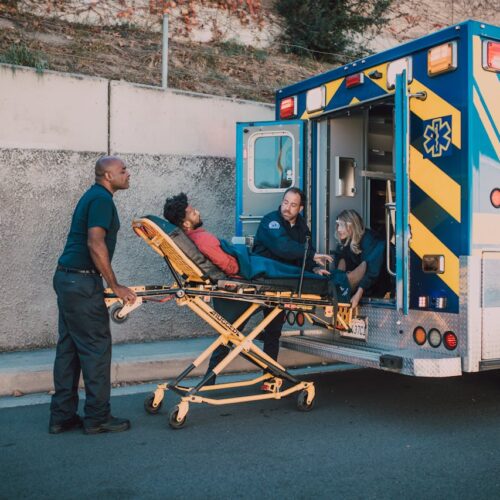Strategies in Family Engagement to Support Youth with Behavioral Health Needs: Q&A with Darin Carver of Weber Human Services
Youth reentering the community after contact with the criminal justice system often have significant mental health and substance abuse needs. Unfortunately, many jurisdictions struggle to implement effective reentry services for these youth and their families. The following feature is a Q&A session with Darin Carver, Clinical Practice Administrator at Weber Human Services in Ogden, Utah. Mr. Carver recently participated in a Council of State Governments Justice Center webinar, during which he addressed how community supervision and treatment providers can best support youth with behavioral health needs following release from out-of-home placement. In this Q&A, Mr. Carver discusses the promising practices in his jurisdiction and offers his own perspective on emerging research in juvenile justice.
You have mentioned the need for treatment providers to match their engagement strategies to the type of parent response you receive. Could you explain how this process works?
We start with the attitude of acceptance. The provider or the counselor has to be willing to say: “Whatever the family presents with today is fine. I’m willing to start there and move forward. It’s just where they are. They’ve probably been there for quite some time.” Families can come in and present in unique ways, but we found that there tends to be four family response patterns that we come across to which we try to match services.
The first of the four response patterns we have identified is intense conflict and negativity. So families come in and there is a lot of arguing going on among them. The parents are highly negative, not just about the system, but also about their child. If they were to put it into behavioral health terms or provider lingo, they might say: “This is my son. He has a conduct disorder, he has always had a conduct disorder, and he will always have a conduct disorder.” So, we really try hard in these situations to reframe the problem to help them see that their child may have good motives but poor methods. The child may in fact be doing this for some reason that makes some sense in the context of the family system, but the way they go about it might be frustrating. We don’t want to deny that frustration, but we also want to help parents see that their child’s motivations and actions are relational.
Usually parents will identify something simple, rather than a complete change, that they want to see in their child. They may say something like: I just want him to respect me. Well, I think we may be able to accomplish that. What we can’t do is fix your child, so to speak, because your child doesn’t need to be fixed.
The second response pattern is guarded and resistant. Families come in and they’re not necessarily arguing with each other: There is no conflict, but they don’t want to talk about what is going on. They are frustrated with the system, they feel like the system is interfering in their lives, and we just try to openly acknowledge that. We ask them what hasn’t been helpful and what has been helpful. With a family that responds this way, we have also found some mileage in solving small, practical problems to build credibility. When they come in guarded and resistant, sometimes we’ll change the time of the sessions to be more convenient for them or help them with a transportation need. This type of gesture tends to reduce some of that guardedness and resistance that they come in with.
The third pattern, which actually to me as a counselor has been the most challenging, is when a client comes in with a “passive response,” or the family has a passive response to the problem. The family will say, “I know my son is in a gang. I know he has these mental health problems. It just is what it is.” And they are almost, to a degree, kind of fine with it. In that situation, we have to uncover the crisis in the family and help them see that this truly is a critical juncture in their lives, and this child really needs some serious intervention. We have to be careful: We don’t want to sound negative towards the family or the child in those situations. But we do have to have them look ahead and understand that if these problems aren’t solved there will be a long-term negative effect. It means a lot of motivational interviewing with those folks as well.
The final response pattern is motivated, where the families come in very hopeful that the interventions we provide will work. And our response to those folks is encouraging. We feel like we can jump in and look for solutions.
The last point I want to make is that there are some strategies that we use with all families. Regardless of their type of response, we have to help them build cohesiveness, improve their communication, get very clear about parental roles and expectations, and clarify their own family values and structure. Those are common targets early in treatment for us. We don’t really want to move forward finding solutions for other problems until we solve these initial engagement questions.
Do you do assessments for this?
We have a fairly informal manual or set of clinical protocols that we train to, and that we listen for in supervision. This guides us as we work with clinicians to identify these patterns for families in our program.
As treatment providers, how do you engage probation officers in this process?
We try to educate the probation officers, make them aware of what we are doing. So if they are part of the very first session or meeting with parents, they recognize that we have an agenda that follows this format and that we want them to be aware of it. They are very supportive once we have provided additional training to them and communicated what we want to do in this process.
Do you conduct regular trainings to talk about family engagement?
We definitely connect in different settings. Every other year, we hold a very large formal meeting with everybody who is involved or might be involved from a juvenile justice standpoint. We will bring in someone as a keynote speaker—we’ve had the Chief Justice of the Utah Supreme Court and the Attorney General—that gets people there. And we talk about some of these very topics we are talking about now. Every six months we will meet with the entire probation unit and once a quarter we meet with the committee that is part of our program.
Maintaining those close relationships with the juvenile court is important. They have provided some excellent training for us around some of the risk principles.
How do you integrate criminogenic risk principles into behavioral health treatment?
To be referred into our programs, particularly our co-occurring collaboration program, there’s a very short referral form that we ask probation officers to fill out. We don’t want to create a barrier by requiring too much paper work, so it is very brief. We then ask them to attach Utah’s validated protective risk-assessment conceptualization to that referral form.
We use the referral form and integrate the important elements of that risk assessment into intervention. So, let’s say that on the risk assessment, what we find is that one of the high-risk areas for this youth is negative peer association. One of the targets for us in this case is improved family communication. We know that if we improve family communication, it may or may not reduce risk of reoffense. But if we work on improved communication related to negative peer association, now we are really addressing both targets, criminogenic risk and needs of the family.
So in that scenario, we might work on how the parent communicates to the child his or her desire to know who the child spends time with and to meet those friends, in addition to voicing what their parental expectations are. So we are talking about communication, but it is really targeting negative peer associations, which is part of their criminogenic risk profile.
There’s some evidence that supports this notion that if you are addressing criminogenic risk, it is going to have a positive corresponding effect on many of the mental health symptoms and substance use behaviors that these youth present with.
Many programs struggle with getting their clients’ criminogenic needs addressed in treatment. How do you encourage providers to integrate criminogenic risk into their treatment plans?
We try to show them the evidence in the literature. Even things like functional family therapy and multisystemic therapy—which were really designed to address criminogenic needs—have great long-term evidence on how they reduce mental health problems and substance abuse problems. We try to educate them about that idea. Also sometimes we get into the nitty-gritty of what we are actually doing with the families we serve. It’s a long-term process for providers to adapt to this type of work.
Do you see the juvenile justice field moving in a particular direction?
Juvenile justice has really become a passion for me. I find it fascinating and really interesting work. It is clear that the juvenile justice system is moving in the direction of recognizing that adolescents aren’t miniature adults, and they shouldn’t be treated that way. There’s more understanding of brain development, of the different risk segments that exist in the juvenile justice system, and of how mental health and substance use problems must be addressed for these kids.
The challenge, I think, is the gap that often exists between research and practice. Providers are knowledgeable about the research of what works. There has been a great effort to disseminate that information, but we lack some understanding about what it really takes to deliver those interventions in a way that brings about the same results that were found in the research. The Risk, Need, and Responsivity Principles—all that looks great on paper—but they are not consistently found in practice. We are headed in the right direction, but applying what we know is obviously the next step.
In response to growing calls for police reform in New Jersey, particularly following the shootings of Najee Seabrooks…
Read More Three Things to Know About New Jersey’s Groundbreaking Community Response Legislation
Three Things to Know About New Jersey’s Groundbreaking Community Response Legislation
In response to growing calls for police reform in New Jersey, particularly…
Read More Apply Now: Join a Learning Community for Community and Crisis Response Teams to Improve Responses to Youth
Read More
Apply Now: Join a Learning Community for Community and Crisis Response Teams to Improve Responses to Youth
Read More
 Apply Now: Join a Learning Community Focused on Substance Use and Overdose Community Response Programs
Read More
Apply Now: Join a Learning Community Focused on Substance Use and Overdose Community Response Programs
Read More













